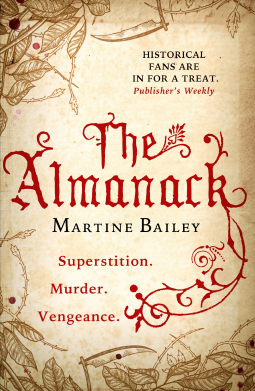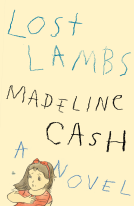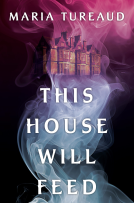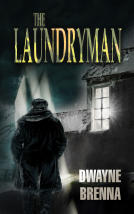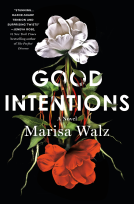Please wait... This may take a moment.
The Almanack
This title was previously available on NetGalley and is now archived.
Pub Date
Mar 03 2020
| Archive Date
Nov 30 2019
Description
"Bailey’s prose sparkles" The Times
"Puzzle solvers and historians will love this mystery" Booklist
Superstition. Murder. Vengeance.
Tabitha Hart earns a scandalous living in London, with whichever gentleman has enough coin for her company. But in the summer of 1752, her mother urgently summons her home to the village of Netherlea and, with reluctance, she returns. However, she is greeted by the news that her mother has died in disturbing circumstances.
Finding cryptic notes in her mother’s almanack, Tabitha is determined to discover the truth, but the superstitious villagers are wary of her. Only the enigmatic Nat Starling is prepared to join her, as she sets out to uncover her mother’s killer. But soon the summer draws to a close and snow sets in, cutting off Netherlea from the outside world. As an unknown killer prophesies their deaths, Tabitha and Nat now face the darkest hours of their lives.
"Bailey’s prose sparkles" The Times
"Puzzle solvers and historians will love this mystery" Booklist
Superstition. Murder. Vengeance.
Tabitha Hart earns a scandalous living in London, with whichever...
Description
"Bailey’s prose sparkles" The Times
"Puzzle solvers and historians will love this mystery" Booklist
Superstition. Murder. Vengeance.
Tabitha Hart earns a scandalous living in London, with whichever gentleman has enough coin for her company. But in the summer of 1752, her mother urgently summons her home to the village of Netherlea and, with reluctance, she returns. However, she is greeted by the news that her mother has died in disturbing circumstances.
Finding cryptic notes in her mother’s almanack, Tabitha is determined to discover the truth, but the superstitious villagers are wary of her. Only the enigmatic Nat Starling is prepared to join her, as she sets out to uncover her mother’s killer. But soon the summer draws to a close and snow sets in, cutting off Netherlea from the outside world. As an unknown killer prophesies their deaths, Tabitha and Nat now face the darkest hours of their lives.
Advance Praise
'Bailey's prose sparkles'
The Times
'A dark and twisting riddle that is certain to keep readers guessing until the end'
S D Sykes
'An ingeniously plotted, hauntingly atmospheric murder mystery'
Deborah Swift
'A beguiling historical novel set in the Georgian era. Witty, wily, and great fun'
Essie Fox
'Puzzle solvers and historians will love this mystery, and Bailey's richly detailed story is perfect for fans of Ariana Franklin and Rhys Bowen'
Booklist
'A beautifully constructed, deeply satisfying read that plays with the reader, demanding that you keep your eyes on the shadows as much as on the main stage. And it has riddles . . . 50 of them to read with the story or save for a treat'
Historia Magazine
'Historical fans are in for a treat'
Publishers Weekly
'As clever and beautiful as a tapestry'
Rebecca Mascull
'Murderously dark and delightful'
Melissa Bailey
'Bailey's prose sparkles'
The Times
'A dark and twisting riddle that is certain to keep readers guessing until the end'
S D Sykes
'An ingeniously plotted, hauntingly atmospheric murder mystery'
Deborah...
Advance Praise
'Bailey's prose sparkles'
The Times
'A dark and twisting riddle that is certain to keep readers guessing until the end'
S D Sykes
'An ingeniously plotted, hauntingly atmospheric murder mystery'
Deborah Swift
'A beguiling historical novel set in the Georgian era. Witty, wily, and great fun'
Essie Fox
'Puzzle solvers and historians will love this mystery, and Bailey's richly detailed story is perfect for fans of Ariana Franklin and Rhys Bowen'
Booklist
'A beautifully constructed, deeply satisfying read that plays with the reader, demanding that you keep your eyes on the shadows as much as on the main stage. And it has riddles . . . 50 of them to read with the story or save for a treat'
Historia Magazine
'Historical fans are in for a treat'
Publishers Weekly
'As clever and beautiful as a tapestry'
Rebecca Mascull
'Murderously dark and delightful'
Melissa Bailey
Available Editions
| EDITION |
Other Format |
| ISBN |
9781838850357 |
| PRICE |
$14.00 (USD)
|
Additional Information
Available Editions
| EDITION |
Other Format |
| ISBN |
9781838850357 |
| PRICE |
$14.00 (USD)
|
Average rating from 65 members
Readers who liked this book also liked:
Winter
Val McDermid
Biographies & Memoirs, Essays & Collections, Outdoors & Nature
Evil Genius
Claire Oshetsky
Humor & Satire, Literary Fiction, Mystery & Thrillers
The Choir
Carol M. Cram
General Fiction (Adult), Historical Fiction, Women's Fiction
Clara Bow
Clara Bow
Biographies & Memoirs, Entertainment & Pop Culture
The Storm
Rachel Hawkins
General Fiction (Adult), Mystery & Thrillers
In Her Defense
Philippa Malicka
General Fiction (Adult), Women's Fiction
